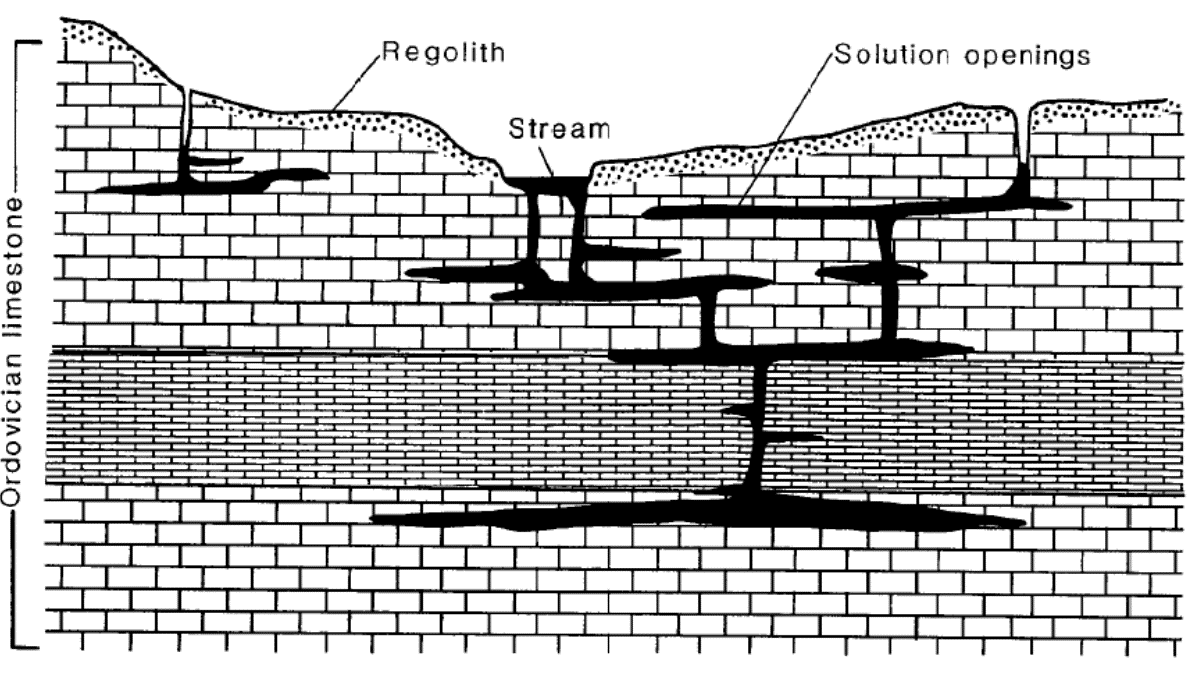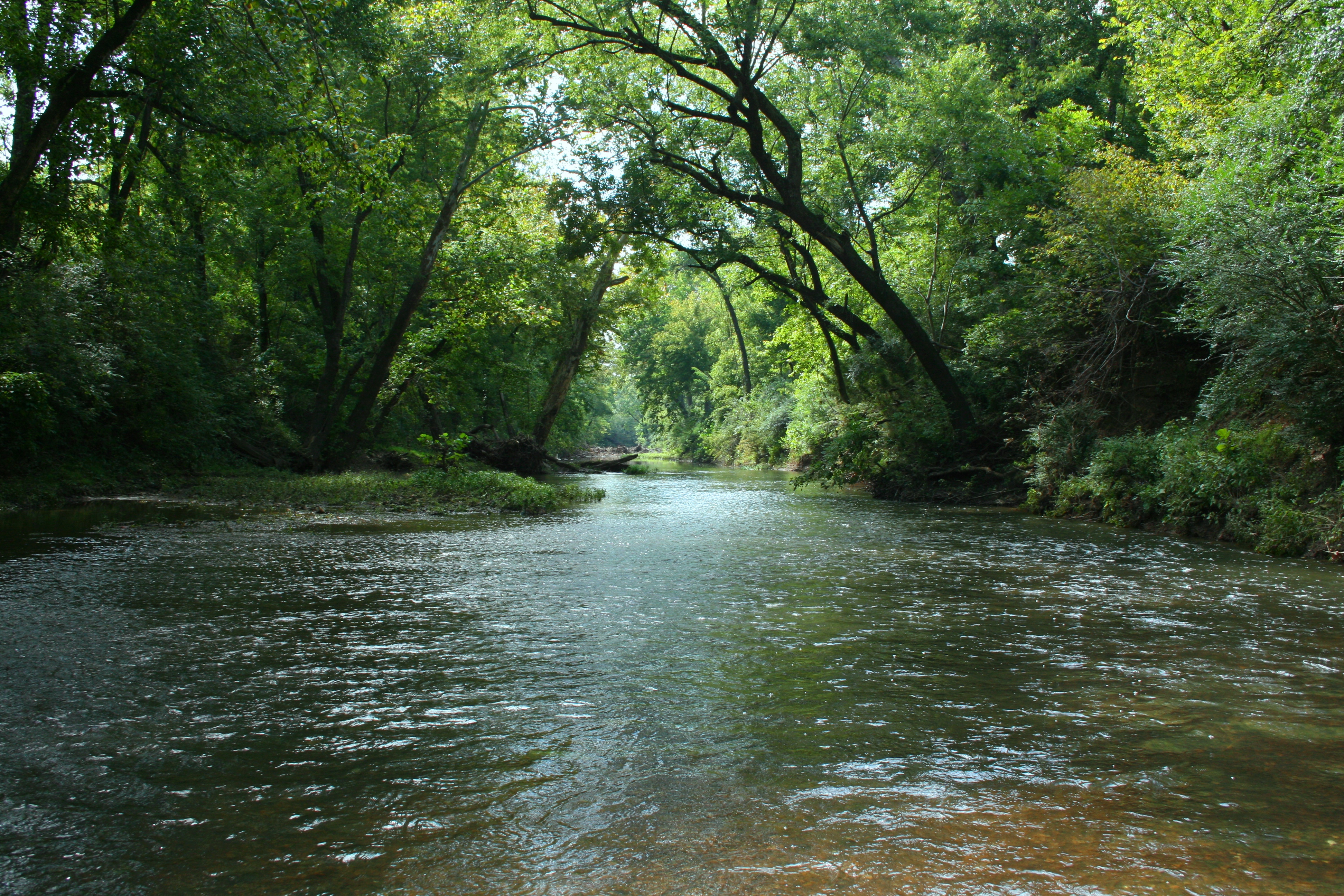Tennessee’s unique geology and stream flows present challenges for wastewater dischargers, agencies that regulate those discharges, and stakeholders that might be affected by such discharges. Because of the rural nature of Tennessee and the rapid residential growth in some areas, “alternative” privately owned and operated land application wastewater treatment systems have become popular where public wastewater collection and treatment systems do not exist. These systems complicate the permitting and monitoring oversite by the Tennessee Department of Environment and Conservation (TDEC) because they are considered “no-discharge” or non-point source discharges that do not require a traditional National Pollutant Discharge Elimination System (NPDES) permit. Such wastewater is infiltrated or discharged into the subsurface, rather than being a point source end-of-pipe discharge into a stream. Because discharges occur belowground and “out of sight”, the effectiveness of the treatment process might be undetermined and problems might not be discovered until for example, wastewater discharges “daylight” onto the ground or into a stream. The vulnerability of surface water and groundwater resources for these “no discharge” systems is linked, in part, to the unique geology of the State.
Wastewater Treatment Alternatives
Wastewater treatment and disposal by “drip irrigation” or land treatment into soil is a developer-preferred, small discharge alternative for wastewater disposal in under-served areas. The systems operate similar to a private septic tank system where solids are settled, biological treatment occurs, and the effluent liquid is discharged into soils in a drain field. While most of these alternative systems are low volume (e.g., thousands of gallons per day) and are associated with small community sources (e.g., residential neighborhoods), at least one large Tennessee municipality is considering land application methods as a means to meet restrictive in-stream water quality criteria due to historical degradation of the receiving stream by decades of water withdrawal and traditional end-of-pipe wastewater discharges.
TDEC has regulated land application wastewater treatment systems since the mid-1990s by issuing State Operating Permits (SOPs). Until recently, however, TDEC had no formal regulations to establish permitting and operational requirements for those systems. The Board of Water Quality, Oil and Gas (Board) formally approved a new SOP regulation on April 20, 2021 but that regulation did not include standards for land application discharges that have been problematic across the State. TDEC removed the land application portion of the final proposed regulation prior to the Board vote because of opposition by a few land developers and a proposed bill introduced in the Tennessee legislative session that would have completely removed TDEC’s authority to regulate land application systems. That bill was tabled once TDEC committed to removing the proposed land application standards from the version presented to the Board for approval. As a result, land application systems remain largely unregulated in Tennessee.
SOPs have resulted in limited protection of groundwater and / or surface water, based upon recent and past violations and enforcement actions made by TDEC. TDEC has issued 302 active SOPs statewide for land application systems and of those, 94 (31 percent) have been issued Notices of Violations and / or have enforcement orders issued against them.[1] Of those with problems, 97 percent of those sites exist in counties with no local regulations for design and operation of the alternative systems. The above data demonstrate that there is a higher degree of protection of groundwater and surface water resources where formal, local regulations exist – and especially in the absence of state-wide regulations.
Why Hydrogeology is Relevant
Tennessee has variable and complex geology, and that complex geology affects the effectiveness of belowground treatment and disposal of wastewater. Shallow water table aquifers in soil commonly exist within inches of drip irrigation systems and are connected with groundwater in the underlying bedrock.
Middle Tennessee Geologic Conditions[2]
The combined soil and bedrock water table aquifer commonly discharges into the nearest receiving stream. The shallow karst limestone aquifers of Middle and East Tennessee enable the rapid movement of contaminants through complex flow paths in cracks in the bedrock.[3] “Karst” geologic conditions can provide a direct, rapid pathway for contaminants to migrate to a receiving stream through discrete channels in the bedrock, with little or no pollutant attenuation. Groundwater migration pathways can be difficult to predict and monitor due to that geologic complexity.
The City of Franklin, Tennessee (suburban area of Nashville) is an example of how a large, urban municipality is potentially joining the ranks of other alternative land application dischargers. The City relies on the Harpeth River for a part of its domestic potable water supply, in addition to the river receiving historical municipal wastewater discharges. Due in part to low volume baseflow and water withdrawals in the drier summer months and the wastewater pollutant loads discharged into the river from sewage treatment (16 million gallons per day), TDEC issued a Total Maximum Daily Load (TMDL) for organic enrichment and dissolved oxygen that limits the amount of pollutants that the City can discharge into the river.[4] In response to that TMDL and projected future wastewater discharges up to 23 MGD by 2040, the City began in 2020 evaluating traditional and alternative options to discharge wastewater.[5] In addition to a disposal option to continue direct surface water discharges into the Harpeth River, the City is also considering options where wastewater is disposed by land application belowground, including:
- Drip irrigation and rapid infiltration within the riparian area along the Harpeth River to augment “baseflow” of the river, and
- Aquifer “recharge” through injection wells drilled into “karst features.”
While Franklin will not select an option(s) until it completes its analysis, the fact that large-scale wastewater infiltration and injection options are being considered by the City is significant – in the absence of state-wide land application regulations by TDEC, the history of non-compliance with other SOPs, and the presence of a TMDL that limits further degradation of the Harpeth River. Given that the City recognized that drip irrigation and rapid infiltration of wastewater will augment baseflow of the river, the City recognizes the probable hydraulic connection between the land-applied wastewater and the Harpeth River. Also, given the City’s conceptual plan to consider injecting millions of gallons of wastewater every day into karst features (e.g., sinkholes, solution-enlarged conduits in bedrock), one can reasonably expect that injected wastewater (under pressure) to reach the nearby Harpeth River. One can also expect that injections into karst features will flow along complex preferential pathways in multiple directions in the discrete fractures and joints in the karst bedrock aquifer – possibly adversely affecting water wells and groundwater quality radially from the injection point(s).
Tennessee Groundwater: Water of the State
Ironically, Franklin’s conceptual options for land application to avoid TMDL loading restrictions associated with the current end-of-pipe discharge into the Harpeth River might still result in the same or similar loading effect on the river. Unless the injected or infiltrated wastewaters will be treated beyond current treatment processes prior to entering the river, the wastewaters will have organic enrichment and dissolved oxygen loading effects on the Harpeth River because of the expected hydraulic connection. The injected wastewaters would still possibly be subject to the same surface water discharge restrictions because:
- The belowground discharges would likely be the “functional equivalent” of a surface water discharge and would therefore be subject to TDEC’s NPDES permitting program, rather than the SOP program.[6]
- Wastewater that is hydraulically connected to the Harpeth River will possibly violate the TMDL loading restrictions that are meant to prevent future degradation.
The conceptual plan for land treatment / belowground disposal also includes the possible unintended risk of contaminating groundwater that is currently being used for drinking water or might be used in the future. Not only would the wastewater include traditional municipal pollutants like nitrogen, phosphorous, and disinfection by-products, wastewater might also contain emerging pollutants such as Per- and Polyfluoroalkyl Substances (PFAS, “forever chemicals”)[7] and pharmaceuticals. Groundwater is afforded protection in Tennessee as a “water of the State”, and shallow belowground wastewater discharges would need to ensure TDEC groundwater water quality compliance to protect current and future uses of the groundwater resource.
In summary, land application wastewater disposal systems offer an opportunity to develop under-served areas of Tennessee. They have been proven to be effective when properly located, designed, and operated, considering local soil and geologic conditions. However, those systems sometimes come with historic failures and significant risks to groundwater and surface water quality without adequate regulation. Without state-wide SOP or NPDES regulation of land application systems by TDEC and local county-specific regulations, Tennesseans are required to navigate site-specific challenges on their own to ensure that water quality is protected.
References
[1] Rulemaking Hearing Rule(s) Filing Form, 0400-40-06, State Operating Permits, New Rules, March 2020.
[2] Preliminary Delineation and Description of the Regional Aquifers of Tennessee – The Central Basin Aquifer System. Water-Resources Investigations Report 82-4002. J.V. Brahana and M. Bradley. USGS 1986.
[3] Tennessee Groundwater Monitoring and Management, Groundwater 305(B) Report, 2020. Available at https://www.tn.gov/content/dam/tn/environment/water/drinking-water-unit/wr_wq_report-groundwater-305b-2020.pdf
[4] City of Franklin, Tennessee, Professional Services Agreement, COF Contract No. 2020-0012.
[5] City of Franklin, Tennessee, Professional Services Agreement, COF Contract No. 2020-0012.
[6] County of Maui, Hawaii v. Hawaii Wildlife Fund, the Supreme Court of the United States, April 23, 2020
[7] Summary Report, Initiatives to Evaluate the Presence of PFAS in Municipal Wastewater and Associated Residuals, Michigan Department of Environment, Great Lakes, and Energy, June 2020.




